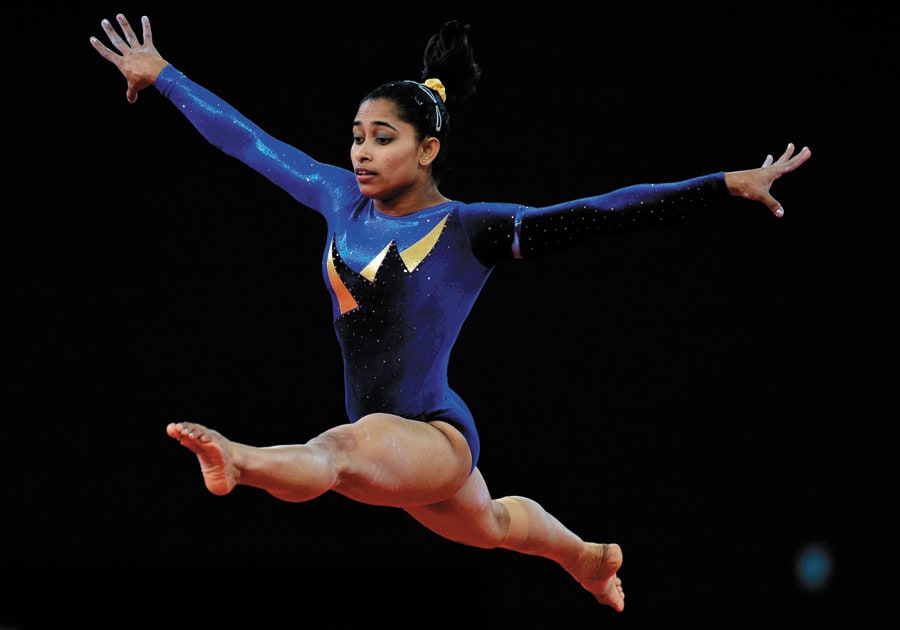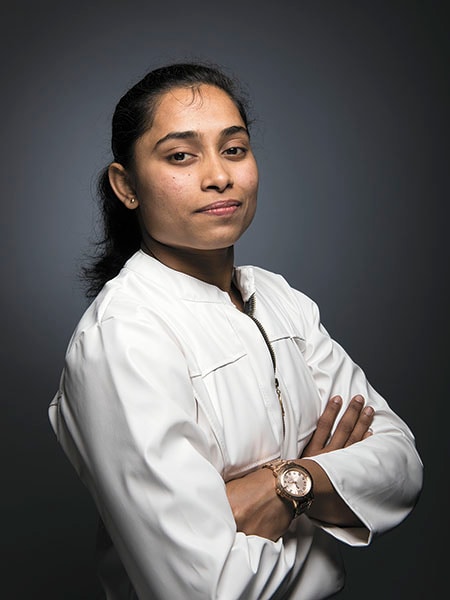
How Dipa Karmakar captured hearts in a cricket-frenzied country
Despite missing out on a medal in the Rio Olympics, gymnast Dipa Karmakar is part of sporting history
 Dipa Karmakar has entered history books by becoming the first Indian woman gymnast to reach the Olympics
Dipa Karmakar has entered history books by becoming the first Indian woman gymnast to reach the OlympicsImage: Getty Images
Karmakar reached the apparatus with peak speed, sprung high into the air off it with a front handspring, and did a double somersault before landing on her haunches. The end wasn’t perfect—points were docked for not landing on her feet—but she regained her balance in no time and completed a manoeuvre that only four other gymnasts have managed (a few somewhat dubiously) since Russian champion Elena Produnova, the one it’s been named after, first achieved it in 1999.
Karmakar narrowly missed a podium finish in Rio—she fell 0.15 points short of bronze winner Giulia Steingruber of Switzerland—but her performance catapulted her from near-anonymity in the country to limelight on the global stage. Words of praise poured in from peers, Biles included; she was accorded a reception on a par with medal winners PV Sindhu and Sakshi Malik, and was recently conferred the prestigious Padma Shri award. Most important, Karmakar is now a household name in a country that is often accused of a blinkered devotion towards cricketers.
“I grew up doing gymnastics. I enrolled for it even before I started school,” Karmakar tells Forbes India as she settles down for a chat post-practice at the Indira Gandhi Stadium in the capital. She has just returned from a break at her home in Agartala in far-flung Tripura where she began dabbling in her sport in the mid-’90s, when she was barely six. Karmakar’s father was a weightlifting coach at Sports Authority of India (SAI), Tripura, her uncle a gymnast and aunt a state-level swimmer. So, sport was always a priority. “While in other families kids are pressured to study, I never faced any such compulsions. That made it easier for me to pursue what I was good at,” she says. “I have a feeling my father always liked gymnastics and, hence, made me take it up.”
In 2002, when Karmakar was nine, she won her first gold medal in the North East Games held in Agartala. However, she still wasn’t serious with the sport. It was her first coach Soma Nandi who spotted her talent and handed her over to her husband and state-level gymnast Bisweshwar, who has remained her coach and mentor since. The turning point for Karmakar came in 2007 when she won five medals—three of them gold—at the Junior National Gymnastics Championships held in Jalpaiguri, West Bengal. “By then, I was old enough to understand the sport and developed an interest,” she says. Since then, Karmakar has won as many as 77 medals in state, national and international championships.

Dipa Karmakar was conferred the Padma Shri after her impressive performance at the Rio Olympics
Image: Amit Verma
However, the initial days of training were anything but smooth, recollects Karmakar. From inadequate infrastructure to paucity of funds, she had to battle many challenges. “I had to make do with discarded second-hand equipment and irregular-sized landing mats. On a few occasions, I also had to use parts of an old scooter to do my vaults,” she says.
One of her toughest trials came from flat feet, a physical trait a gymnast can ill-afford. In one of her training sessions, she was told it would affect the quality of her jump. A medical test almost ruled out gymnastics for her. But, while her detractors were busy pointing out what she couldn’t, it helped Karmakar sift out what she could. “It always helps to know the negatives. I decided to give my best and work around them,” she says.
It’s her zeal to step out of the comfort zone that makes her successful today, says Nandi, her coach. “One should try out new things. The competition is first with yourself,” he says. His ward echoes his sentiments. “We needed extra points, hence the Produnova in Rio Olympics was important. I knew very few people had attempted it, but I wasn’t afraid,” she says. The gymnast’s spunk, which transcended her young age and her background, is reminiscent of 19-year-old Produnova’s. Asked why she chose to do the perilous vault, the Russian legend had said in 1999, “It’s necessary to push the limits, otherwise there would not be a winner in a competition. A winner should always show something new, something extraordinary.”
In early 2014, Nandi started researching the Produnova on the internet and got Karmakar started on it just three months prior to the Glasgow Commonwealth Games in July. It helped that just the previous year SAI had stepped in to fill in some of the infrastructural inadequacies and introduced a foam pit around the vault table. It made attempting the Produnova a tad less risky. “Had there not been a foam pit, it would have been impossible for us to attempt it. SAI’s support helped us in a significant way,” he says. “It’s important to take risks but you also have to ensure you don’t get hurt.”
However, Karmakar was more brazen than her coach. “For me, it was just about learning a new vault,” she says. It proved to be much more than that in Glasgow where she ended up with a bronze and became the first Indian gymnast to win a medal in the Games.
Right now, Karmakar can’t envisage a life beyond gymnastics, with a medal in Tokyo 2020 as the bird’s eye. Once she calls it quits, she will rush back to nurturing her sweet tooth. “I crave chocolates, ice creams and sweets now,” she says with a smile. On a serious note, Karmakar plans to be involved with the development in her state, grooming and nurturing talent. “There is a lot of talent in India. We should be able to spot them and train them in the right direction,” says the gymnast, who was made an assistant director with the state government after her Rio exploits.
Besides sports, Karmakar spends some of her time studying. After getting a BA degree from Women’s College, Agartala, through distance education, she is currently pursuing an MA in political science. “Learning never goes out of fashion, be it sports, academics or any other field,” she says. “You need not be perfect in everything. But you should never give up.”
(This story appears in the 17 March, 2017 issue of Forbes India. To visit our Archives, click here.)














